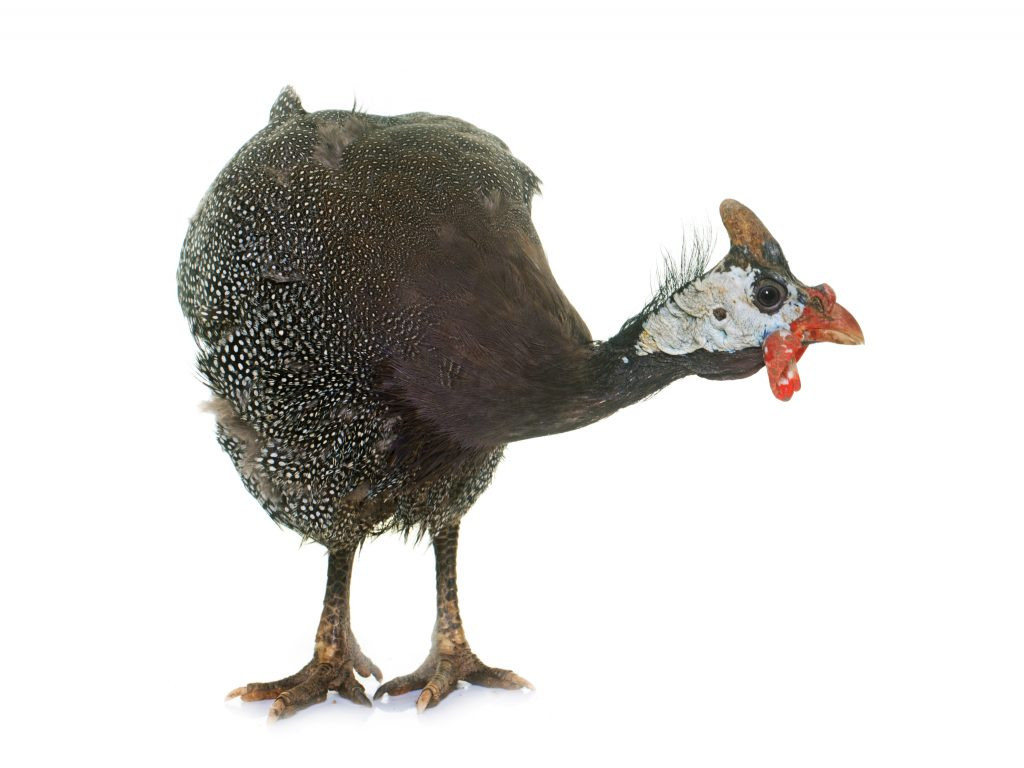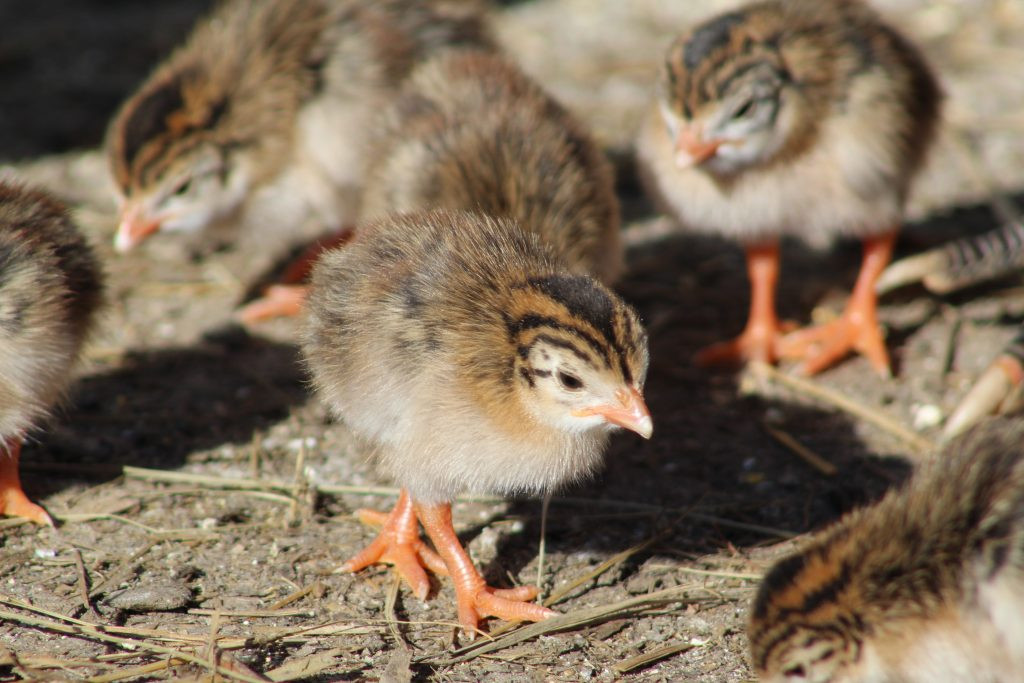Guinea fowl, often simply called guineas, are fascinating birds increasingly favored by those keeping small flocks and backyard poultry. Known for their hardiness and vibrant personalities, they serve various roles, from natural pest control to farmyard security systems. A common question for those considering or currently raising these unique birds is: Can Guineas Fly? The answer is a resounding yes. Guinea fowl are indeed capable fliers, a trait deeply rooted in their wild ancestry and essential to understanding their behavior and management.
 Guinea fowl
Guinea fowl
Guinea Fowl: Nature’s Gamebirds
Guinea fowl are classified as gamebirds, originating from Africa. This heritage explains much about their inherent characteristics. Unlike domesticated chickens, guineas retain a stronger connection to their wild instincts. They are naturally more alert, active, and independent. This wildness is intrinsically linked to their flight capabilities. In their natural habitat, flight is crucial for survival, enabling them to escape predators and navigate their environment. Even in domestic settings, this instinct remains strong.
Their vocal nature, often described as an alarm system, is another manifestation of their wildness. The loud, distinctive calls of guinea fowl serve as warnings, alerting the flock to potential danger. This alertness, combined with their ability to fly to safety, makes them effective watchdogs for any farmyard. Furthermore, their agility extends beyond flying; they are also excellent runners, preferring to move on foot when possible, especially when evading threats.
The Flight of Guinea Fowl: Abilities and Characteristics
Yes, guinea fowl can not only fly, but they are strong and agile fliers. They are not clumsy ground-bound birds. When startled or motivated, they take to the air with speed and purpose. Here’s a closer look at their flight abilities:
- Powerful Flight: Guinea fowl are capable of powerful, rapid flight. They can take off almost vertically when needed, launching themselves upwards with surprising force.
- Distance and Height: While they may not fly for miles like migratory birds, guineas are capable of flying distances of 400 to 500 feet at a time. They can also achieve considerable height, easily clearing fences and low buildings.
- Purposeful Flight: Their flight is typically purposeful. They fly to escape perceived threats, to roost in high places for safety during the night, or to explore and forage in a wider area. They are less likely to fly aimlessly.
- Early Flight Development: Keets, or baby guinea fowl, develop the ability to fly at a very young age. This early flight capability is another survival mechanism, allowing young birds to evade predators quickly.
This inherent flight ability is a key consideration for anyone raising guinea fowl. It impacts housing requirements, fencing needs, and overall management strategies.
Guinea Fowl Flight in Domestication: Managing a Flying Flock
Domestication has not diminished the guinea fowl’s ability to fly. While they can become accustomed to human presence and farm environments, their wild instincts, including their strong flight drive, remain. This means that managing guinea fowl requires an understanding of their flight capabilities and implementing appropriate measures.
- Fencing and Containment: Standard chicken fencing is often insufficient for guinea fowl. Their ability to fly over fences means that taller barriers or covered pens might be necessary, especially if you need to keep them in a specific area.
- Free-Ranging vs. Confinement: Guinea fowl thrive in free-ranging environments where they can utilize their natural foraging and flight behaviors. However, this also means they can roam over a large area, potentially venturing beyond property lines. Confining them, while possible, requires ample space to prevent stress and encourage natural behaviors as much as possible.
- Wing Clipping (Considered with Caution): In certain situations, particularly if complete confinement is necessary, wing clipping on one wing can limit their flight ability. However, this is a measure to be considered carefully and ideally avoided if possible. It interferes with their natural defenses and can be stressful for the birds. It is essential to prioritize secure housing and appropriate fencing before considering wing clipping.
Understanding that guineas can and will fly is crucial for responsible ownership. Planning for their flight capabilities from the outset ensures both their well-being and the peace of mind of their keepers.
Benefits and Challenges Related to Guinea Fowl Flight
The flight capability of guinea fowl presents both advantages and challenges for those who raise them.
Benefits:
- Predator Evasion: Their ability to fly is a significant asset in predator avoidance. They can quickly escape ground predators and reach safer locations, such as trees or rooftops.
- Extended Foraging Range: Flight allows them to access a wider foraging area, which is beneficial for pest control. They can cover more ground in their search for insects, ticks, and other pests.
Challenges:
- Roaming and Boundary Crossing: Their flight ability can lead them to roam over large areas and potentially cross property boundaries, which may be a concern in suburban or densely populated areas.
- Noise When Startled: While their alarm calls are beneficial for security, sudden flight, especially when a flock is startled, can be accompanied by loud and potentially disruptive noise.
- Difficulty in Initial Confinement: Introducing new guinea fowl to a location requires initial confinement to acclimate them to their surroundings. Their strong flight drive can make this initial confinement period more challenging.
Practical Considerations for Raising Guinea Fowl (Related to Flight)
When planning to raise guinea fowl, consider these practical aspects related to their flight capabilities:
- Housing: Provide secure housing that offers protection from weather and predators. If confinement is necessary, ensure ample space within the enclosure. Covered pens can prevent escape by flight.
- Fencing: If free-ranging or semi-free-ranging, consider taller fencing than typically used for chickens. Assess your property and surroundings to determine the necessary fence height to manage their roaming.
- Introduction to New Environments: When introducing guineas to a new coop or property, confine them to a secure pen for a week or two. This allows them to become familiar with their surroundings before being allowed to roam more freely. Gradually introduce them to the wider area, as described earlier, starting with one or two birds.
- Predator Protection: While their flight is a defense, ensure they have safe roosting locations, such as high perches within their housing or access to trees, to further protect them from nocturnal predators.
 Group of keeps
Group of keeps
Conclusion: Appreciating the Flying Guinea Fowl
In conclusion, to answer the question directly: yes, guinea fowl can fly and are proficient fliers. Their flight capability is an integral part of their nature, linked to their wild ancestry and essential for their survival and behavior. Understanding and respecting this aspect of guinea fowl is crucial for anyone considering raising these unique and beneficial birds. By acknowledging their flight abilities and implementing appropriate management strategies, you can successfully integrate guinea fowl into your farm or backyard, benefiting from their pest control, security alerts, and distinctive character while ensuring their well-being. Embrace their wild spirit and appreciate the dynamic presence these flying gamebirds bring to your homestead.
For more detailed information on raising guinea fowl, refer to resources from agricultural extensions and poultry experts.
Further Reading:
- Keeping guinea fowl. Jacquie Jacob, Tony Pescatore, and Austin Cantor, University of Kentucky.